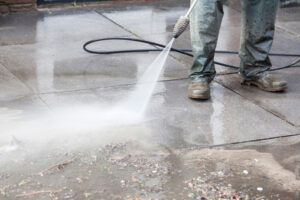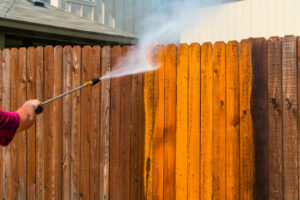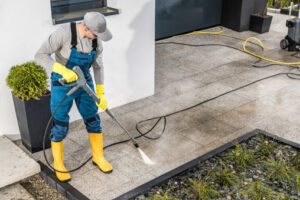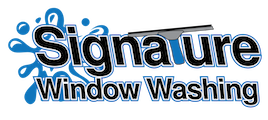 Have you ever heard of the term ‘softwash’ and wondered what it could mean? If so, you’re not alone! Many people are unfamiliar with this process but are curious to know more. Softwashing is a revolutionary new way of cleaning surfaces that is safer than traditional methods, yet still provides superior results. In this article, we will explain what softwash is and why it has become so popular in recent years.
Have you ever heard of the term ‘softwash’ and wondered what it could mean? If so, you’re not alone! Many people are unfamiliar with this process but are curious to know more. Softwashing is a revolutionary new way of cleaning surfaces that is safer than traditional methods, yet still provides superior results. In this article, we will explain what softwash is and why it has become so popular in recent years.
The first thing to understand about softwashing is that it uses minimal pressure while relying primarily on chemicals to clean surfaces. Softwash is a low-pressure technique that utilizes specially formulated detergents and sanitizers instead of high-pressure water jets to clean surfaces. The process works by breaking down dirt, grime and other contaminants on the surface without damaging or discoloring the material underneath. This makes softwashing perfect for applications such as cleaning roofs, siding, driveways, decks, patios and more.
Softwashing is quickly becoming the preferred method for many property owners due to its effectiveness and safety. It can save time and money when compared to other cleaning methods since there’s no need for costly equipment or repairs due to damage caused by high-pressure water jets. Additionally, softwashing avoids potential environmental hazards associated with runoff from chemical cleaners because less water is used overall. In short, softwashing provides a safe, cost-effective solution for keeping your property looking its best year round!
Definition Of Softwash
Softwashing is a cleaning method that uses environmentally friendly, non-toxic, low-pressure equipment and cleaning solutions to clean surfaces. This approach is designed to be gentle on surfaces while still removing dirt and grime; it also reduces the risk of damage to delicate surfaces. Softwashing has become increasingly popular in recent years due to its effectiveness and lack of negative environmental impact.
The process of softwashing begins with a pre-treatment using cleaning solutions specifically designed for the surface being cleaned. The pre-treatment helps to loosen dirt, grime, and other contaminants from the surface before low-pressure equipment is used to remove them. The low pressure prevents any potential damage from occurring during the cleaning process. After the pre-treatment, additional cleaning solutions are applied if necessary in order to fully remove all surface contaminants.
Softwashing is an effective way of restoring surfaces without risking damage or having a negative environmental impact. It is also an efficient method of cleaning since it does not require high pressure or harsh chemicals that can take longer to rinse off. Instead, softwashing only requires specialized solutions and low pressure which makes it much faster than traditional methods of cleaning.
History Of Softwashing
Softwashing has its roots in traditional power washing and pressure washing. Power washers and pressure washers have been used for cleaning since the early 20th century, but softwashing emerged as an alternative to these methods due to their potential to damage surfaces. Softwashing uses low-pressure equipment and specialized cleaning solutions that are gentle on surfaces while still effectively removing dirt, grime, and other contaminants. This wash system is designed to be more efficient than traditional power washers and pressure washers, as it requires less time and effort.
As softwashing technology has developed over the years, more effective cleaning processes have been developed. Different types of pre-treatments can be used before the actual softwash takes place, allowing for a deeper clean without risking any potential damage to surfaces. Additionally, new low-pressure equipment has been developed which allows for a more precise application of the cleaning solution onto the surface being cleaned.
Softwashing continues to gain popularity due to its effectiveness and lack of negative environmental impact. This type of cleaning process is ideal for restoring surfaces without risking damage or having a negative impact on the environment. It is also an efficient method of cleaning since it does not require high pressure or harsh chemicals that can take longer to rinse off; instead, softwashing only requires specialized solutions and low pressure which makes it much faster than traditional methods of cleaning.
Benefits Of Softwashing
The benefits of softwashing are numerous. Unlike power washing and pressure washing, softwashing uses a much lower water pressure to clean surfaces, reducing the risk of damaging vinyl siding or other exterior surfaces. This method also removes dirt, grime and other contaminants more effectively than traditional power washing and pressure washing. It is also an environmentally friendly process as the cleaning solutions used are biodegradable and require less water than traditional methods.
Softwashing is also faster than power or pressure washing, as it requires less time for the cleaning solution to penetrate into the surface being cleaned. Additionally, there is no need for special cleaners or high-pressure equipment for this process; all that is required is a low-pressure washer and specialized cleaning solutions. Furthermore, this type of cleaning does not require any harsh chemicals which could damage sensitive surfaces or take longer to rinse off.
Overall, softwashing provides an effective way to clean without risking any damage to surfaces or having a negative impact on the environment. It is efficient and fast, requiring only specialized solutions and low-pressure equipment while still achieving great results with minimal effort.
Types Of Surfaces Suitable For Softwashing
 Softwashing is an effective cleaning method that can be used to clean a variety of surfaces. It is especially useful for delicate surfaces, such as vinyl siding, stucco, and wood, as it requires little to no high-pressure water to clean them. Softwashing is also beneficial for flat surfaces such as driveways, sidewalks and patios.
Softwashing is an effective cleaning method that can be used to clean a variety of surfaces. It is especially useful for delicate surfaces, such as vinyl siding, stucco, and wood, as it requires little to no high-pressure water to clean them. Softwashing is also beneficial for flat surfaces such as driveways, sidewalks and patios.
In addition to being suitable for a wide range of surfaces, softwashing is also extremely safe. The low-pressure nature of the process eliminates the risk of damaging any surface from excessive force or pressure. Furthermore, the specialized solutions used do not contain any harsh chemicals which could damage sensitive surfaces or take longer to rinse off.
Overall, softwashing is an effective and safe way to clean many different types of exterior surfaces without having to use high-pressure washers or harsh chemicals. It is fast and efficient, requiring only specialized solutions and low-pressure equipment while still achieving great results with minimal effort.
Equipment Used In Softwashing
Softwashing requires specialized equipment and solutions to effectively clean exterior surfaces. This equipment includes low-pressure washers, detergents, biocides, and surfactants. Low-pressure washers use a gentle stream of water to remove dirt, grime, and other debris without causing any damage to the surface being cleaned. Detergents are used to break down oils and grease while biocides eliminate mold, mildew, and algae growth. Surfactants help loosen dirt particles so they can be washed away more easily.
In addition to the necessary equipment for softwashing, protective gear such as gloves, goggles, and face masks should also be worn when completing the job. The protective gear helps protect the user from any potential hazards that may arise during the process. Additionally, it is important to note that some of the solutions used in softwashing can be harmful if inhaled or ingested so it is important to follow all safety instructions before beginning work.
For those looking for an effective yet safe way of cleaning their exterior surfaces, softwashing is an ideal option. With the right equipment and solutions at hand along with taking necessary safety precautions, anyone can safely enjoy the benefits of this powerful cleaning method.
Steps Involved In The Softwashing Process
Once all the necessary safety precautions are taken and the right equipment is gathered, it is time to begin the softwashing process. The cleaning steps involved in softwashing typically involve several stages of pre-treatment, application of detergents and biocides, rinsing, and post-treatment.
The first step is pre-treatment. This involves applying a solution to the surface being cleaned in order to soften any dirt or grime that may be present on the surface. After this step is completed, a low-pressure washer can be used to further loosen any remaining dirt particles.
Next, detergents and biocides are applied to the area being cleaned. Detergents help break down oils and grease while biocides eliminate mold, mildew, and algae growth. After these solutions have been left on for a few minutes, they can be washed off with a low-pressure washer. Finally, a post-treatment solution can be applied to help protect the surface from future staining or discoloration.
By following these steps correctly and using the right protective gear when necessary, anyone can safely enjoy the benefits of softwashing their exterior surfaces without any damage or risk of harm.
Environmental Impact Of Softwashing
Softwashing is an effective and efficient way to clean exterior surfaces without using harsh chemicals, so it’s no surprise that it’s gaining popularity. However, it’s important to consider the environmental impact of softwashing before opting for this cleaning method.
The most significant environmental benefits of softwashing are its low water use and reduced chemical runoff. Softwashing uses significantly less water than traditional pressure washing methods, which means less water consumption overall. Additionally, because softwashing relies on biodegradable detergents and biocides, there is minimal or no chemical runoff into the environment. This is a major advantage over other types of cleaning methods that involve toxic chemicals that can be harmful to plants, animals, and human health.
Overall, softwashing provides an eco-friendly cleaning solution for exterior surfaces without sacrificing effectiveness. It requires fewer resources such as water and energy compared to other cleaning methods and does not introduce harmful pollutants into the environment. As a result, anyone looking for an environmentally conscious way to keep their outdoor surfaces clean should definitely consider taking advantage of the benefits of softwashing.
Health And Safety Considerations
In addition to its environmental benefits, softwashing is also a safe and healthy cleaning method. The biodegradable detergents used in softwashing are gentle on the surface being cleaned, so there is no risk of damage or staining. Furthermore, since these detergents are non-toxic and biodegradable, they pose no health risks to those doing the cleaning or anyone nearby.
Another safety consideration when it comes to softwashing is the use of pressure washers. Pressure washers can be dangerous if not used properly; however, this isn’t an issue with softwashing since it relies on a low-pressure delivery system. This ensures that the user doesn’t have to worry about potential injury when using a pressure washer with a softwashing solution.
Finally, while softwashing is often associated with commercial applications, it can be safely used in residential settings as well. Whether you’re looking for an eco-friendly way to clean your driveway or need a safe cleaning method for your deck, softwashing provides an effective and affordable solution. With its low water use and reduced chemical runoff, it’s easy to see why this cleaning method has become so popular among homeowners and businesses alike.
Cost Comparison To Traditional Cleaning Methods
 When it comes to cost, softwashing is often a more affordable option than traditional cleaning methods. While pressure washing requires high-powered equipment and typically costs more in the long run, softwashing relies on low-pressure delivery systems which are less expensive and require less maintenance. Additionally, because softwashing uses fewer chemicals than traditional cleaning methods, it can save money on chemical costs as well.
When it comes to cost, softwashing is often a more affordable option than traditional cleaning methods. While pressure washing requires high-powered equipment and typically costs more in the long run, softwashing relies on low-pressure delivery systems which are less expensive and require less maintenance. Additionally, because softwashing uses fewer chemicals than traditional cleaning methods, it can save money on chemical costs as well.
Softwashing also provides a quicker clean compared to other methods. Pressure washing takes a lot of time and energy to complete, while softwashing can be done relatively quickly and efficiently. This not only saves money but also allows for faster turnaround times so the area can be used more quickly.
Overall, softwashing is an efficient, cost-effective solution that delivers great results without compromising safety or quality. It’s quick, simple to use, and provides excellent results without the need for specialized equipment or training. With its affordability and effectiveness, it’s no wonder why many people prefer this method over other forms of cleaning.
Advantages Over Other Cleaning Techniques
Softwashing offers a number of advantages over other cleaning techniques. For starters, it is a non-destructive method that doesn’t require the use of high-pressure jets that can damage surfaces. This makes softwashing an ideal choice for delicate surfaces like residential rooftops or fragile decking materials. Moreover, because it relies on biodegradable soaps and detergents instead of harsh chemicals, it’s much safer to use around people and animals than traditional cleaning methods.
Additionally, softwashing is a more efficient way to clean large areas quickly compared to other methods. Pressure washing may be effective in some cases, but it takes longer and consumes more resources in the process. Softwashing eliminates this issue by using a low-pressure system that is designed to cover large areas quickly and efficiently. This helps reduce time and labor costs while delivering superior results.
Overall, softwashing provides an excellent option for those looking for an affordable, safe and efficient cleaning solution. With its low pressure delivery system, biodegradable cleaners and faster turnaround times, it’s easy to see why this method is becoming increasingly popular with homeowners and businesses alike.
Tips For Effective Softwashing Results
With the right approach, softwashing can provide superior results. Here are some tips to help you get the most out of this efficient cleaning method:
First, make sure to choose a cleaner that is specifically designed for softwashing. Many general-purpose cleaners may not provide the same level of performance as those specifically made for softwashing. For example, using a pressure washer soap on a softwash system may result in poor results and might even damage the surface of what you’re cleaning.
Second, be sure to apply the cleaner evenly over the area you’re cleaning. This will ensure that all surfaces are adequately covered and will allow for uniform coverage during the entire process. In addition, it is important to note that some soaps and detergents need more time than others to effectively remove dirt and grime from surfaces. So be sure to give them enough time to work before rinsing off with water.
Finally, always follow up with a rinse after applying your cleaner. This will help ensure that no residue remains on your surfaces and will leave behind a clean, streak-free finish. Additionally, rinsing after each application helps reduce any potential runoff into nearby waterways or landscaping areas – making softwashing an environmentally friendly way to clean your property!
Maintenance After A Softwash Application
Now that you’ve completed your softwashing application, it’s important to do some basic maintenance to keep your surfaces looking their best. To start, it’s important to regularly inspect the area and check for any dirt or grime buildup that may have occurred since the last time you cleaned. This is especially true if the area gets a lot of foot traffic or is exposed to the elements. If you notice any dirt, grime, or other undesirables, simply reapply your softwashing solution and give it adequate time to work its magic.
It’s also a good idea to seal surfaces after each softwash application. Sealing helps protect against future staining and makes cleaning easier in the long run. Look for a sealant that is specifically designed for softwashed areas – there are many on the market today that work great!
Finally, make sure to keep an eye out for any new growth or discoloration on your surfaces from time-to-time. If you do spot something suspicious, be sure to clean it off immediately before it can cause lasting damage to your property. With these simple steps in place, you can ensure that your surfaces remain looking their best for years to come!
Troubleshooting Common Issues With Softwashing
With any cleaning application, there can be some bumps in the road. Softwashing is no exception, and you may run into some common issues as you use this method to clean your surfaces. Fortunately, with a bit of troubleshooting, these issues can typically be resolved quickly and easily.
First of all, if you’re not seeing the desired results after softwashing an area, you may need to increase the concentration of your cleaning solution or apply it more than once. You should also ensure that your surfaces are completely dry before applying any sealant – otherwise, it won’t adhere correctly and may cause discoloration.
Finally, another issue you may run into is staining from algae or moss growth returning after softwashing. If this happens, look for an anti-fungal treatment specifically designed for softwashed surfaces. This should help combat any additional growth as well as prevent future staining from occurring. With a little extra care and attention to detail when maintaining your property, you can keep your surfaces looking their best!
Differentiating Between Pressure Washing And Softwashing
 When it comes to cleaning outdoor surfaces, pressure washing and softwashing are two popular techniques. However, there are some key differences between the two that should be considered when deciding which method is best for your project.
When it comes to cleaning outdoor surfaces, pressure washing and softwashing are two popular techniques. However, there are some key differences between the two that should be considered when deciding which method is best for your project.
To start with, pressure washing involves a much higher water pressure than softwashing does. This can be beneficial for removing more stubborn dirt and debris from hardy surfaces, but it can also cause damage to softer materials that don’t stand up well to the intense force of the water jets. On the other hand, softwashing uses a lower pressure and is ideal for cleaning delicate surfaces like stucco, vinyl siding, or aluminum.
In addition, there are environmental considerations to take into account with both methods. Pressure washing uses a lot of water in a short amount of time and can cause erosion in certain areas if not done properly. Meanwhile, softwashing relies on biodegradable cleaning agents that are much gentler on the environment – they don’t harm plants or animals and won’t disrupt ecosystems like high-pressure washes can.
Ultimately, it’s important to assess your needs and consider all factors before deciding which method is right for you. If you have any questions about whether pressure washing or softwashing would work best for your project, contact an experienced professional who can help you make an informed decision.
Finding A Certified Professional For Your Home Or Business
When it comes to choosing a professional for your cleaning needs, it is important to ensure that you are getting the best service possible. Certified professionals have the expertise and experience necessary to provide high-quality work. They also use safe products and techniques that won’t damage the environment or surrounding property.
Finding the right person for your job can take some research. Start by asking friends and family if they have any recommendations or look online for reviews of local companies. Make sure whoever you hire has all the necessary licenses and insurance coverage in case of an accident or other unforeseen circumstances. Also inquire about their methods – do they use pressure washing or softwashing?
Once you’ve identified a few qualified professionals, it’s time to get quotes from them and compare prices. Be sure to ask about any additional services they may offer, such as sealing or protecting surfaces after cleaning, as well as any discounts or special offers they may have available. Ultimately, you want to select someone who is reliable, experienced, and within your budget – so take your time and make sure you’re getting the best value for your money.
Conclusion
In conclusion, softwashing is a great alternative to pressure washing, and is a safe, effective way to clean many surfaces. With the right equipment, certified professionals can safely and effectively remove dirt, debris, and other contaminants without damaging the surface. Homeowners and businesses can benefit from softwashing by extending the life of their siding, roofing, decks, patios and more. Softwashing is an affordable way to maintain the appearance of your property while avoiding costly repairs or replacement of damaged surfaces. By finding a certified professional, you can rest assured that your property will be properly cleaned with minimal risk of damage or injury.

Recent Comments